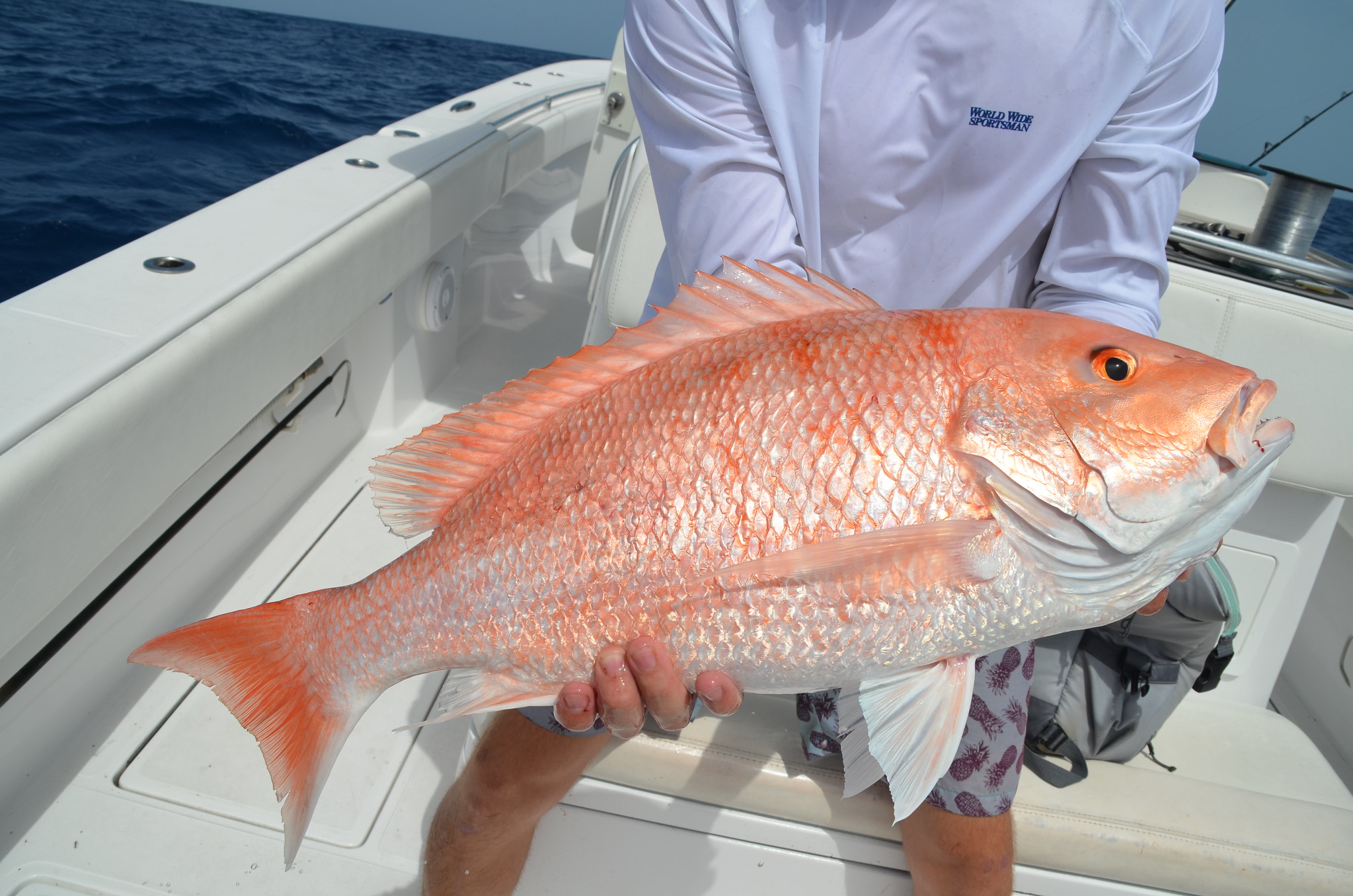Sustainable Red Snapper Fishing: Tips for Texas Anglers
Red snapper is a prized Gulf catch, and fishing sustainably helps protect this resource. Know current regulations, use proper gear like circle hooks and descending devices, and handle fish carefully during catch-and-release to boost survival. Responsible practices help ensure healthy fisheries for the future.
Aug 8, 2025 By Alexis Sabine Assistant Program Director, Fisheries & Aquaculture
4 minutes
 A Red Snapper caught by an angler.
A Red Snapper caught by an angler.Red snapper is one of the Gulf’s most iconic and sought-after fish species. Known for its vibrant color and delicious flavor, red snapper draws thousands of anglers to Texas waters each year. Whether you’re a seasoned offshore angler or new to snapper fishing, following sustainable fishing practices helps preserve this valuable resource. Here’s how you can do your part:
- Know and follow the current fishing regulations
Regulations vary depending on whether you’re fishing in state or federal waters. Be sure to check the latest rules for bag and size limits, seasons, and gear restrictions before heading out on your trip.
Gulf federal waters (9 – 200 nautical miles from shore):
- For-hire season:
- Opened June 1, 2025 and remains open through 12:01 AM on September 16, 2025 (for vessels that possess a federal for-hire reef fish permit)
- Bag limit: 2 fish per person per day
- Size limit: minimum 16 inches (total length)
- More information: tx.ag/Gulfredsnapper and https://fishrulesapp.com
- Private recreational season:
- Also opened June 1, 2025. Harvest will be monitored to determine closure date. Follow TPWD for updates.
- Bag limit: 2 fish per person per day
- Size limit: minimum 16 inches (total length)
- More information: tx.ag/TXredsnapper
Texas state waters (0 – 9 nautical miles from shore):
- Open year-round for recreational anglers
- Bag limit: 4 fish per person per day
- Size limit: minimum 15 inches (total length)
- More info: tx.ag/TXredsnapper
Gear requirements:
- Non-stainless steel circle hooks are required when using natural bait
- Dehooking devices must be onboard for safely removing hooks (required in federal waters)
- Descending devices or venting tools are required when fishing for reef fish in both federal and Texas state waters
- Know your species
Some reef fish species look quite similar, especially since species like vermilion snapper, lane snapper, and mangrove snapper also have red coloring. Because these fish are managed under different regulations, accurate identification is essential. Before heading out on your trip, take time to review fish identification guides. For real-time help with species identification and fishing regulations, the Fish Rules app (https://fishrulesapp.com) is a convenient and reliable tool to have on hand.
- Practice smart catch-and-release
Not every fish you catch will be a keeper. Here’s how to release fish responsibly and improve their chances of survival:
Be Prepared:
- Recognize barotrauma, a pressure-related injury caused when fish are brought up from depth. Signs include bulging eyes, bloated bellies, stomach protruding from the mouth, protruding intestines, or bubbling scales.
- Use descending devices or venting tools to help fish with barotrauma return safely to depth. These tools are required when fishing for reef fish off of Texas. Learn more at https://returnemright.org/.
Handle Fish Responsibly:
- Minimize time out of the water
- Use wet hands when handling fish
- Don’t lift fish solely by the jaw
- Avoid touching the gills or eyes
- Photograph fish while still in the water, or have your camera ready before bringing your catch onboard to reduce stress
Use the Right Tools:
- Use non-stainless, non-offset circle hooks, which reduce chances of gut-hooking
- Use a knotless rubber landing net and a dehooking tool to efficiently bring fish onboard and remove hooks
Fishing for reef fish like red snapper is a Gulf Coast tradition. By following these best practices, you’re helping ensure that the fishery remains sustainable for the future.
Want to learn more? Take a free 15-minute training at ReturnEmRight.org to improve your reef fish release knowledge. Gulf reef fish anglers who complete the training will receive discount codes for release gear from participating manufacturers, making it easier to fish responsibly and protect the resource.
####
About Texas Sea Grant
Texas Sea Grant is a unique partnership that unites the resources of the federal government, the State of Texas and universities across the state to create knowledge, tools, products and services that benefit the economy, the environment and the citizens of Texas. It is administered through the National Oceanic and Atmospheric Administration and is one of 34 university-based Sea Grant Programs around the country. Texas Sea Grant is a non-academic research center at Texas A&M University. The program’s mission is to improve the understanding, wise use and stewardship of Texas coastal and marine resources.
